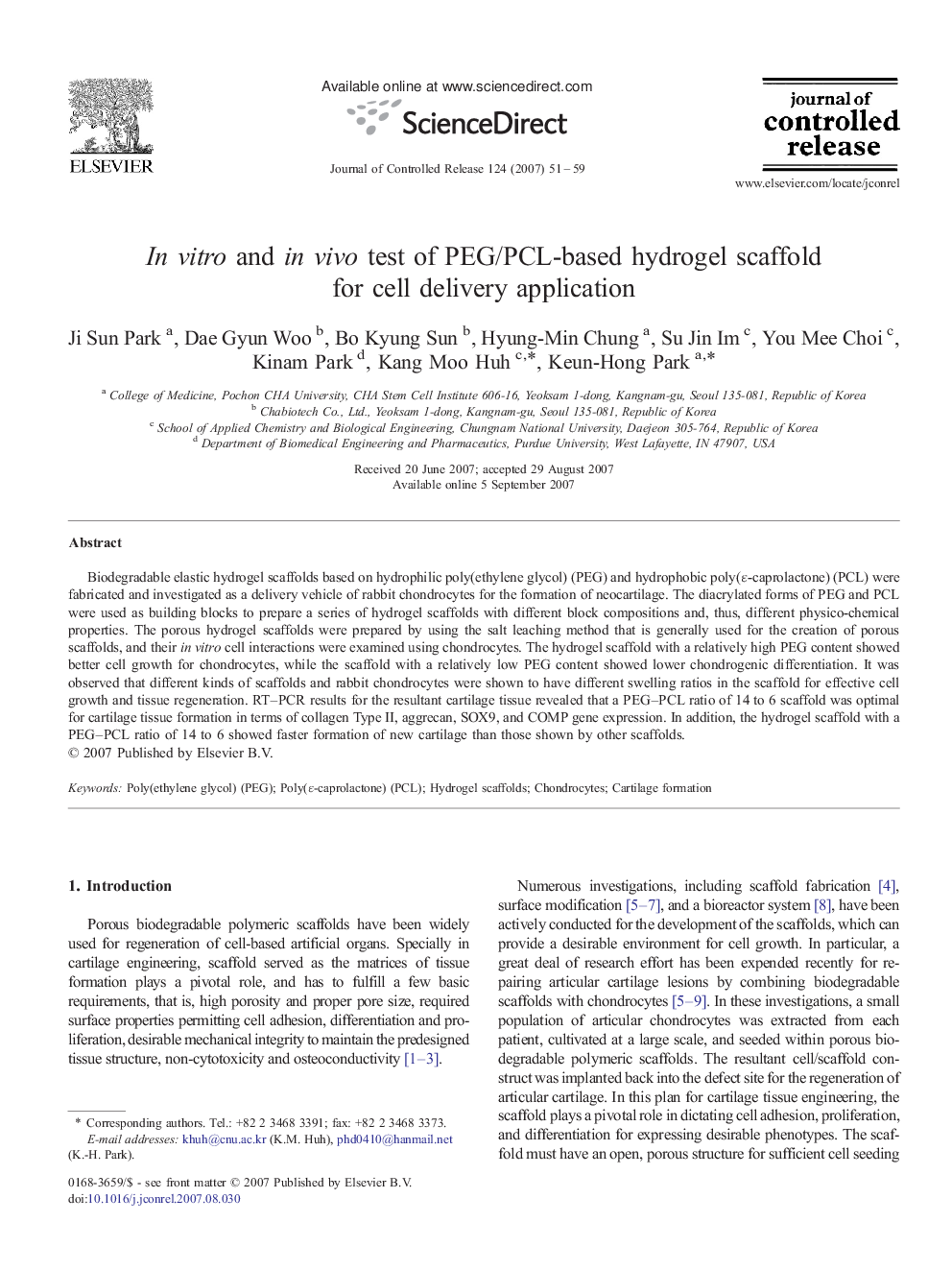| کد مقاله | کد نشریه | سال انتشار | مقاله انگلیسی | نسخه تمام متن |
|---|---|---|---|---|
| 1427162 | 1509083 | 2007 | 9 صفحه PDF | دانلود رایگان |

Biodegradable elastic hydrogel scaffolds based on hydrophilic poly(ethylene glycol) (PEG) and hydrophobic poly(ɛ-caprolactone) (PCL) were fabricated and investigated as a delivery vehicle of rabbit chondrocytes for the formation of neocartilage. The diacrylated forms of PEG and PCL were used as building blocks to prepare a series of hydrogel scaffolds with different block compositions and, thus, different physico-chemical properties. The porous hydrogel scaffolds were prepared by using the salt leaching method that is generally used for the creation of porous scaffolds, and their in vitro cell interactions were examined using chondrocytes. The hydrogel scaffold with a relatively high PEG content showed better cell growth for chondrocytes, while the scaffold with a relatively low PEG content showed lower chondrogenic differentiation. It was observed that different kinds of scaffolds and rabbit chondrocytes were shown to have different swelling ratios in the scaffold for effective cell growth and tissue regeneration. RT–PCR results for the resultant cartilage tissue revealed that a PEG–PCL ratio of 14 to 6 scaffold was optimal for cartilage tissue formation in terms of collagen Type II, aggrecan, SOX9, and COMP gene expression. In addition, the hydrogel scaffold with a PEG–PCL ratio of 14 to 6 showed faster formation of new cartilage than those shown by other scaffolds.
Journal: Journal of Controlled Release - Volume 124, Issues 1–2, 4 December 2007, Pages 51–59